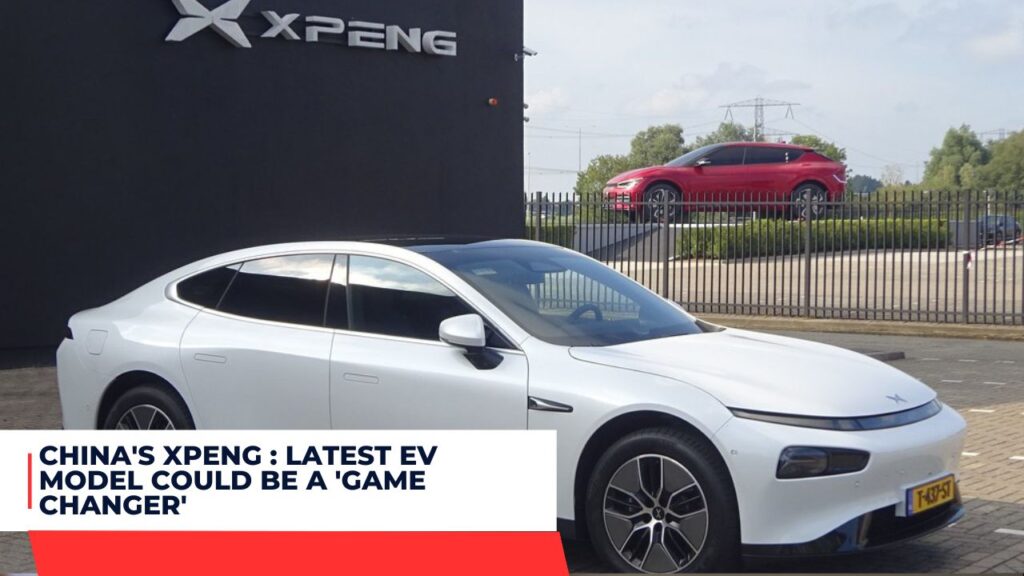China?s Xpeng Motor claims its latest EV model could be an industry game-changer.
On January 1st, BMW unveiled their all-electric seven-seater X9 as a direct challenger to Tesla?s Model Y.
Xpeng has long struggled to deliver vehicles on time. Last month, however, they reported handing over 20,002 vehicles – representing an impressive 31 percent month-on-month increase.
What is the Xpeng G6?
The Xpeng G6 is a direct competitor to Tesla Model Y in size and price. Both cars share similar CLTC ranges but the Chinese car is 20% less costly at its base price.
Xpeng’s SUV marks its inaugural vehicle to utilize their 800V SEPA 2.0 platform, which the company claims will cut research, development and production costs by about one fifth. This platform includes front and rear aluminum die-casting as well as cell-to-body integration to facilitate more efficiently packing larger batteries into vehicles.
Xpeng also claims to feature a 400V fast charging system which will enable it to charge from 10% to 80% in 19 minutes and add 300 km of range in 10 minutes. Furthermore, their XNGP driver assistance system features 31 sensors including two lidars, 12 ultrasonic sensors, five-millimeter wave radars and multiple cameras.
The company hopes the G6 will help it rebound from underwhelming sales of its previous P7 model, which experienced production delays. Deliveries should commence later this month.
How is it different from other EVs?
XPeng is one of the leading Chinese EV manufacturers when it comes to technology development. Their cars use blade batteries which are safer and more energy-efficient than traditional batteries; also, its latest car, the XPeng P7, employs an all-new electric drive system making it faster and more powerful than its predecessor models.
Tesla’s rival G6 crossover vehicle launched this June has garnered 35,000 pre-orders since then.
XPeng hopes to attract young consumers with its high-tech features and affordable prices, offering 20,002 electric vehicles (EVs) to customers in China in October, a 31% increase from September. This success was propelled by heavy sales promotions and Beijing’s decision to end subsidies for purchasing electric vehicles; yet its vehicle margin (i.e. the difference between its selling price and tangible costs like raw materials and labour) remains negative.

How much will it cost?
XPeng has not released the price of their G6 yet, but CEO He Xiaopeng is confident it will remain competitive. In recent news from their company they announced they have already received over 25.000 pre-orders from customers.
The G6 will be built on XPeng’s EV platform and feature advanced technologies like its smart driving and cabin technologies as well as fast charging capabilities.
Though Xpeng boasts some of the most advanced assisted driving technology available in China, they have struggled to turn a profit. Their losses for the third quarter of 2023 nearly doubled those from last time, and stock prices have seen significant decline. Still, their plans for Europe appear promising: He Xiaopeng is an experienced tech leader familiar with European auto markets; plus their company boasts a robust team of engineers and designers that work on its production facilities.
Will it be a game changer?
The G6 marks Xpeng’s initial attempt at competing against Tesla Model Y in the burgeoning BEV segment. According to its CEO, this SUV coupe promises smart driving technology, intelligent cabin design and superfast charging speeds.
Xpeng hasn’t disclosed prices yet, but we anticipate it will fall below the $40,000 cost of an entry-level Tesla Model Y. Furthermore, pre-orders have already started for their vehicle.
As with other Chinese EV manufacturers, Xpeng isn’t currently profitable and is quickly burning through cash reserves. They hope the launch of their latest vehicle will provide a foundation for long-term sustainability; finding ways to balance production costs against rising consumer demand may mean restricting availability or raising prices – possibly restricting availability to high-income consumers or raising prices further; expanding global presence is also necessary as most cars sold are sold within China itself.






